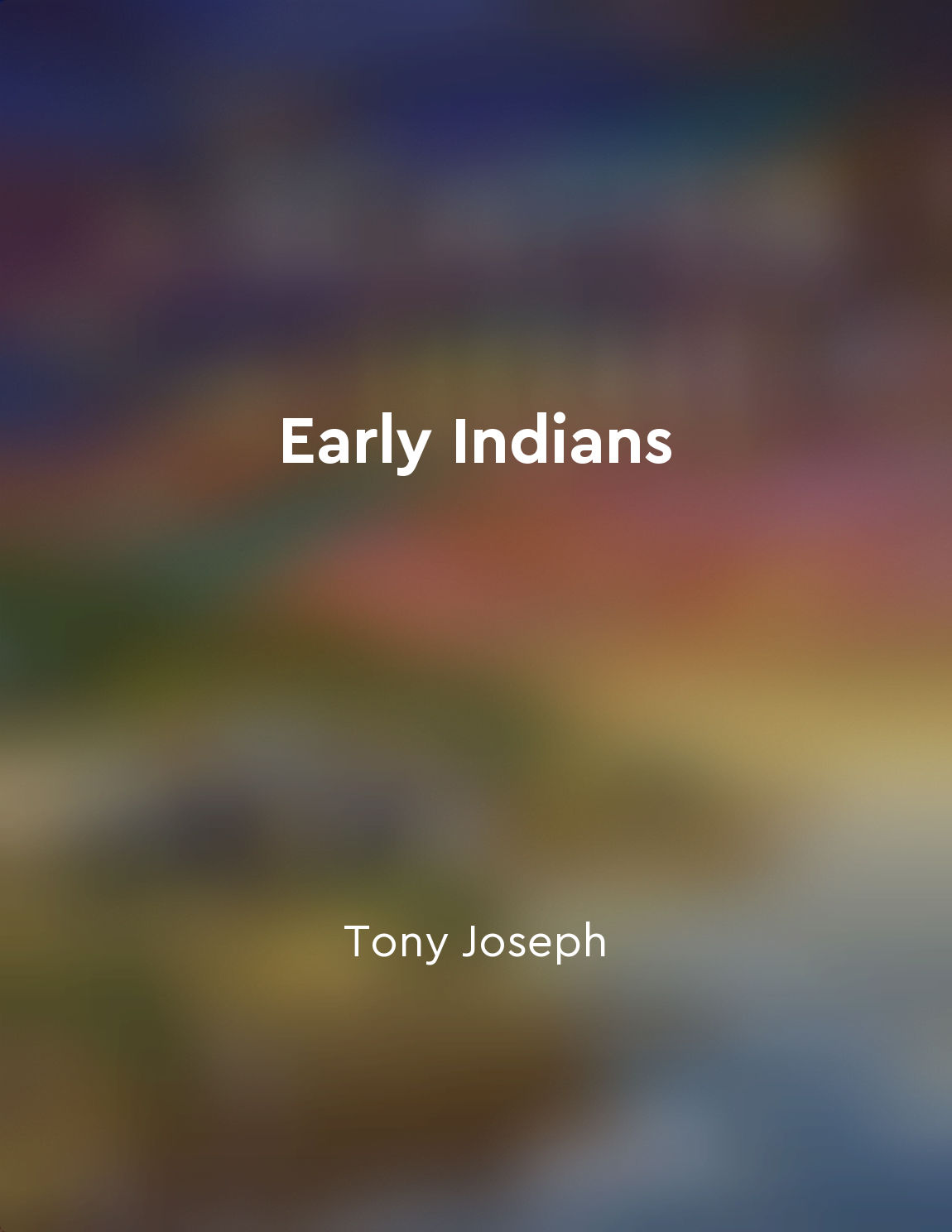Rigveda provides insights into early Indian customs and beliefs from "summary" of Early Indians by Tony Joseph
The Rigveda, a collection of hymns composed over several centuries, offers a window into the customs and beliefs of early Indians. These hymns provide valuable insights into the way people lived, their social structures, and their religious practices. By studying the Rigveda, scholars can piece together a picture of ancient Indian society and its cultural norms. One of the key aspects revealed in the Rigveda is the importance of cattle in early Indian society. Cattle were seen as a measure of wealth and were used in various rituals and ceremonies. The hymns mention the practice of gifting cattle, as well as the role of cattle in sacrificial rituals. This emphasis on cattle suggests that pastoralism played a significant role in the economy of early Indian communities. The Rigveda also sheds light on the social hierarchy of ancient India. The hymns refer to different classes of society, such as priests, warriors, and commoners. These classes had specific roles and responsibilities, and their interactions are described in detail in the hymns. The Rigveda also mentions the concept of varna, or social order, which would later evolve into the caste system. In addition to social customs, the Rigveda provides insights into the religious beliefs of early Indians. The hymns are dedicated to various deities, such as Indra, Agni, and Soma, and describe rituals and sacrifices performed to appease these gods. The Rigveda also mentions the concept of rebirth and the idea of an afterlife, highlighting the importance of religious beliefs in shaping early Indian society.- The Rigveda serves as a valuable source of information about the customs and beliefs of early Indians. By studying these hymns, scholars can gain a better understanding of the way of life in ancient India and the cultural practices that shaped the society of that time.
Similar Posts
The enduring legacy of the epic saga
The epic saga of Mahabharat has left an indelible mark on Indian culture and society. Its enduring legacy can be seen in variou...
Devotion to gods and goddesses is a key aspect of Hindu worship
The worship of gods and goddesses is deeply ingrained in the practice of Hinduism. It is not merely a ritualistic offering of p...
The revolution must be guided by a clear ideology
The revolution must be guided by a clear ideology. This principle is crucial for the success of any revolutionary movement. Wit...
Vedic literature provides insights into ancient Indian culture
Vedic literature offers a window into the customs, beliefs, and practices of ancient Indian society. By delving into the verses...
Indian art and architecture
Indian art and architecture reflect the rich cultural heritage of the country, spanning several centuries and influenced by var...
Readers can deepen their understanding of the Geeta through this book
This book serves as a valuable guide for readers seeking to enhance their comprehension of the Geeta. By providing the original...
The cunning strategies of Duryodhana
Duryodhana, the eldest Kaurava prince, was known for his cunning strategies in the epic of Mahabharata. He was a master manipul...
The Cold War brought about a tense standoff between superpowers
The Cold War, that long twilight struggle between East and West, ushered in an era of tense confrontation and delicate diplomac...


